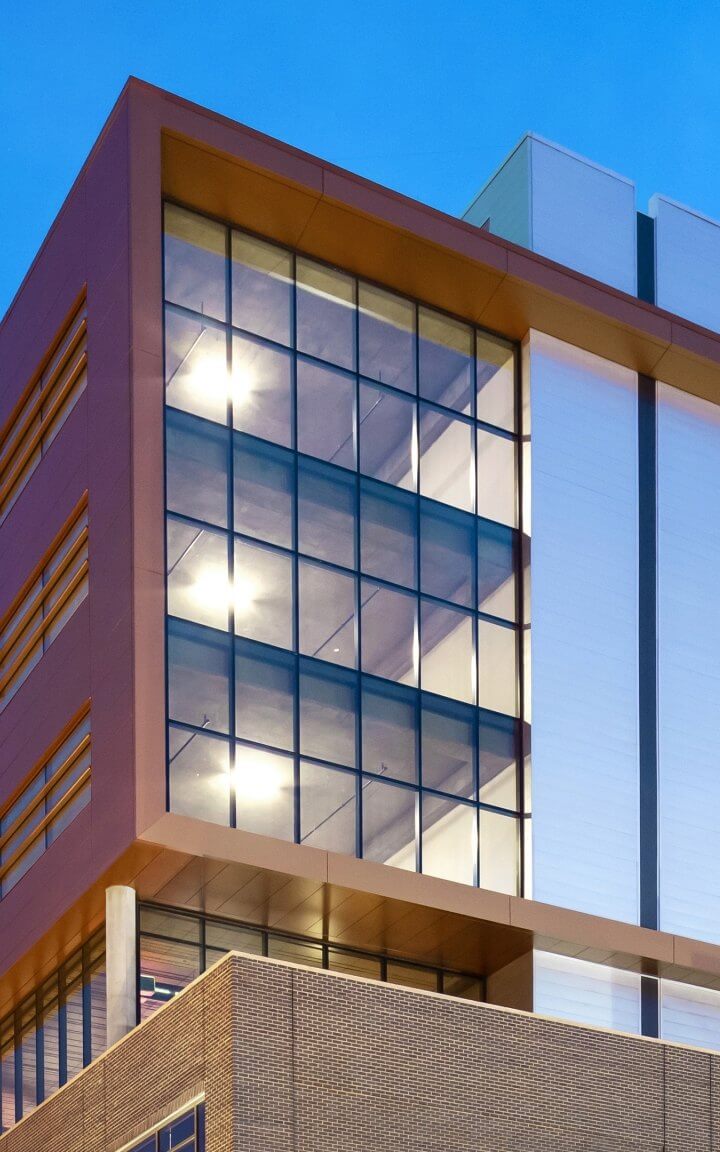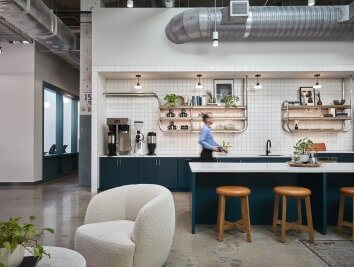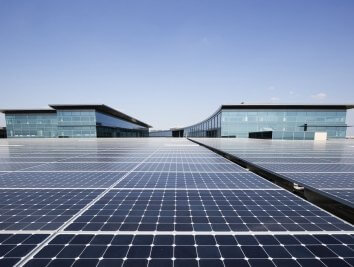Holistic Water Management in Building Design

Water, our most precious natural resource is alarmingly scarce. With global warming on the rise causing an onslaught of drought, sporadic rainfall, and extreme weather conditions coupled with inefficiencies in the built environment, our water supply is dwindling. Much of the problem is due to human behavior and ineffective design: sites with poor drainage systems, outdated plumbing systems and appliances, and poor planning and operations, not to mention the lack of awareness and education that leads to unnecessary overuse and waste.
Consider these statistics:
- Up to 40 billion gallons of water are used every day in the US.1
- Up to 40% of our daily water is wasted due to leakage and overuse.3
- Projections for 2050 indicate water usage will increase by 20-50% due to population growth, urbanization, and building usage. 4
At Corgan, we apply a systems-thinking approach to water management and strive to design efficiencies in the built environment and urban community. With climate change on the rise resulting in unprecedented weather events, we’re moving beyond water conservation and embracing a holistic approach to building typologies that include stormwater management, efficient water use and water reuse, and AI technology. This means understanding rainfall trends, climate-induced events, and usage patterns to design water retention and detention systems and assessing the feasibility of grey or black water reuse systems. Such an approach can help us better manage water in times of both drier periods and sudden cloud bursts and inform innovative solutions to capture and retain water.
Our goal is to move beyond an approach of simply “using less” to create buildings that “do more.”
Stormwater Management
Climate risk assessment on project sites helps in determining design criteria for stormwater management systems. It’s worth noting that architectural firms can play a vital role in maximizing the amount of rainwater catchment – especially in drier climates. All exterior surfaces including roof and vertical walls can be sculpted to detain, direct, and capture rainwater. Of course, green and blue roof systems can further control the flow of stormwater. Beyond buildings, where possible, we maximize permeable surfaces to allow for the water to percolate and replenish groundwater and explore multi-use spaces that function as water detention systems in the event of a storm event. Sponge cities and parks in the public realm can help absorb, retain, and detain large quantities of stormwater as well.
Reduced Water Consumption
With the end goal of reducing potable water use, various project typologies will integrate bespoke strategies and application of materials, systems, and equipment to achieve its prescribed goals. In aviation projects, for example, the maximum water use is in public bathroom facilities. For these projects, the preferred strategy is to collect and reuse rainwater for flushing. We also may consider greywater recycling systems for the facility. In an airport, sensors in plumbing lines combined with AI algorithms can help predict and detect leaks and other failures.
Case studies
Let’s look at a few building projects where we’ve prioritized water management in planning and design for more efficient water management.
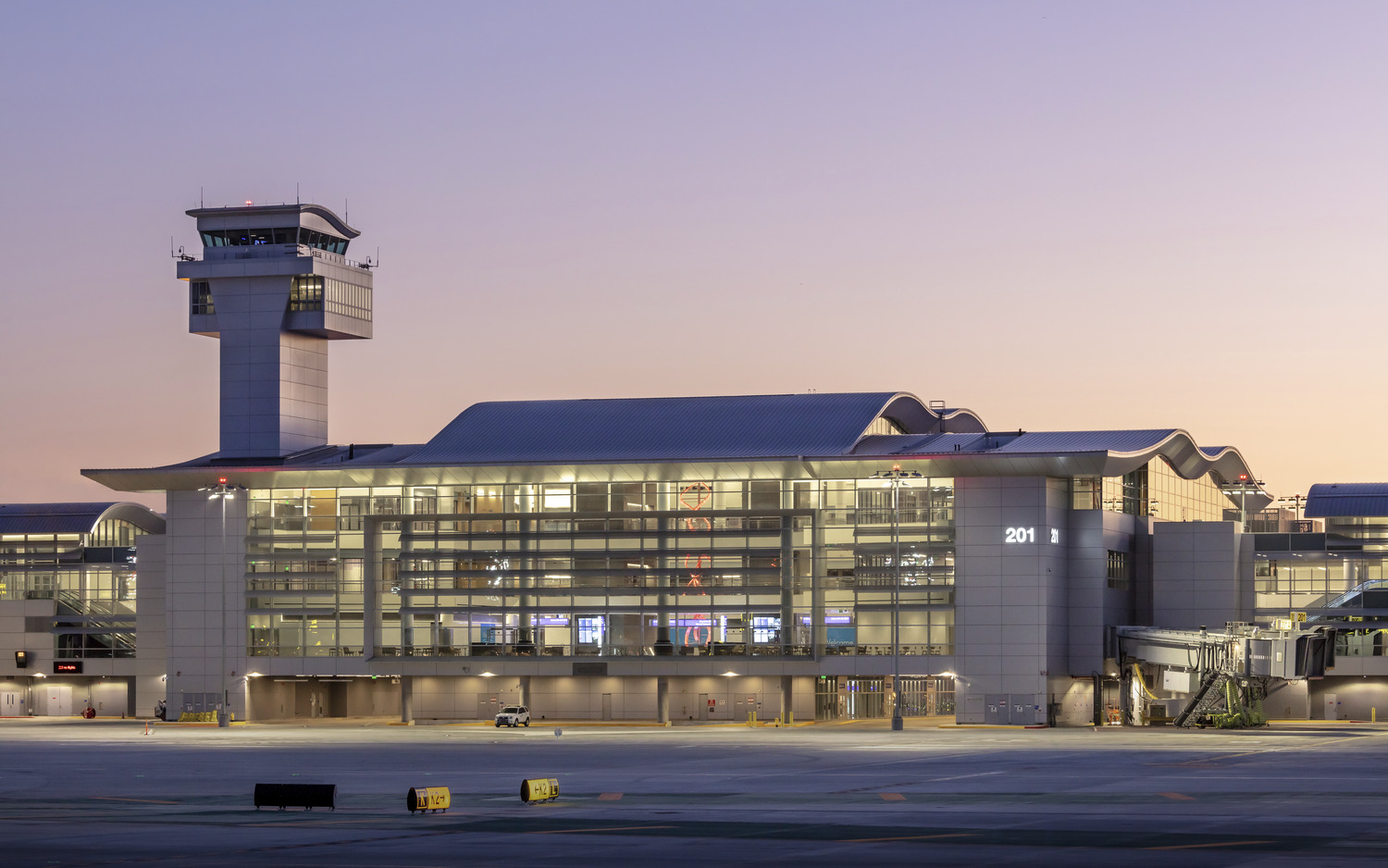
The Los Angeles International Airport West Gates at Tom Bradley uses rainwater harvesting and efficient reuse systems. We worked closely with LAWA to specify efficient automated plumbing fixtures for water use. The project uses 41 percent less water than similar projects and attained a CALGreen Tier 1 and USGBC’s LEED Gold with design and construction strategies leading to highly sustainable results.
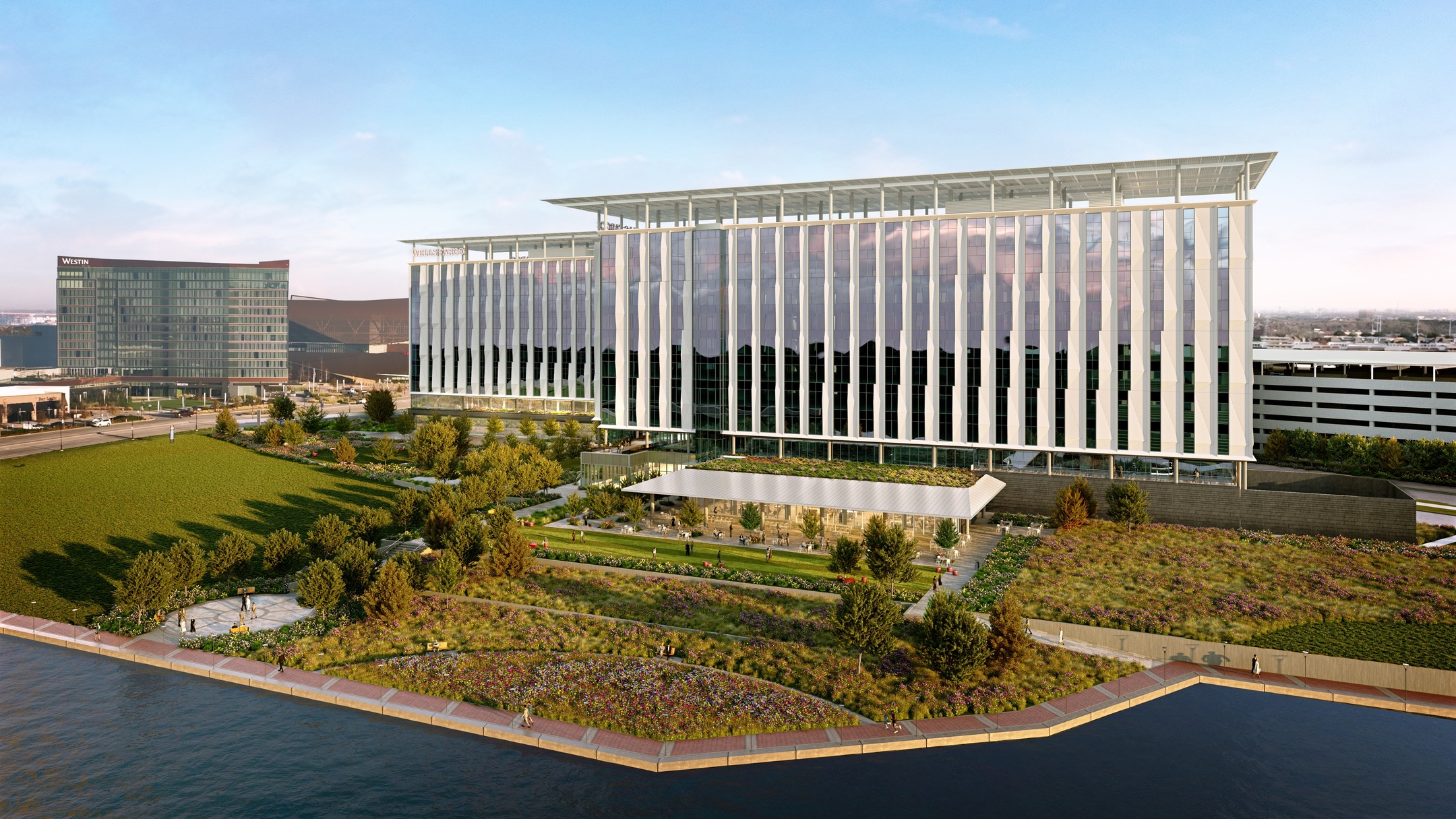
The first net-positive campus for Wells Fargo considers the overall correlation of multiple sustainable design strategies and their combined effect in achieving a high level of overall energy, resiliency, and water conservation realization. Designed to be net-positive energy, the campus is expected to generate more energy on-site than it consumes. The project is pursuing LEED Platinum and is designed to measurably minimize the environmental impact of the building while maximizing benefits to the building occupants. All of the stormwater is diverted to the adjoining lake and is reused for irrigation for the project and nearby properties.
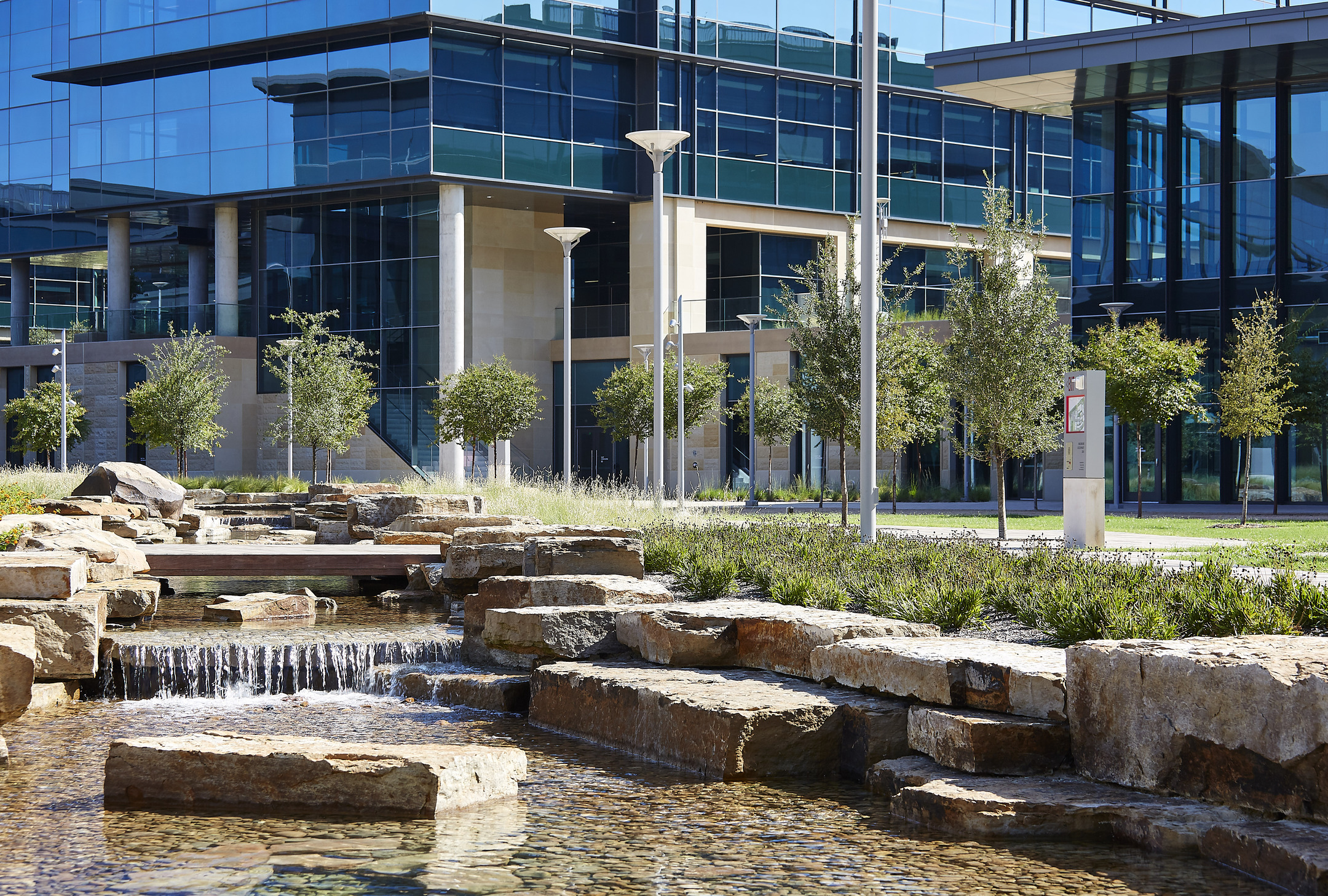
For our Toyota Headquarters campus design, the primary concept emerged from a vision of workspaces arranged around a central courtyard, naturally sculpted from the contours of a creek bed and retaining existing site water flows to incorporating into the landscape. Through the combination of a 400,000-gallon rainwater collection system, fixture efficiency, and drought-tolerant native plantings, the campus conserves approximately 20 million gallons of water each year. Honoring the natural landscape and site features, the campus celebrates the special placemaking qualities of the original ecology.
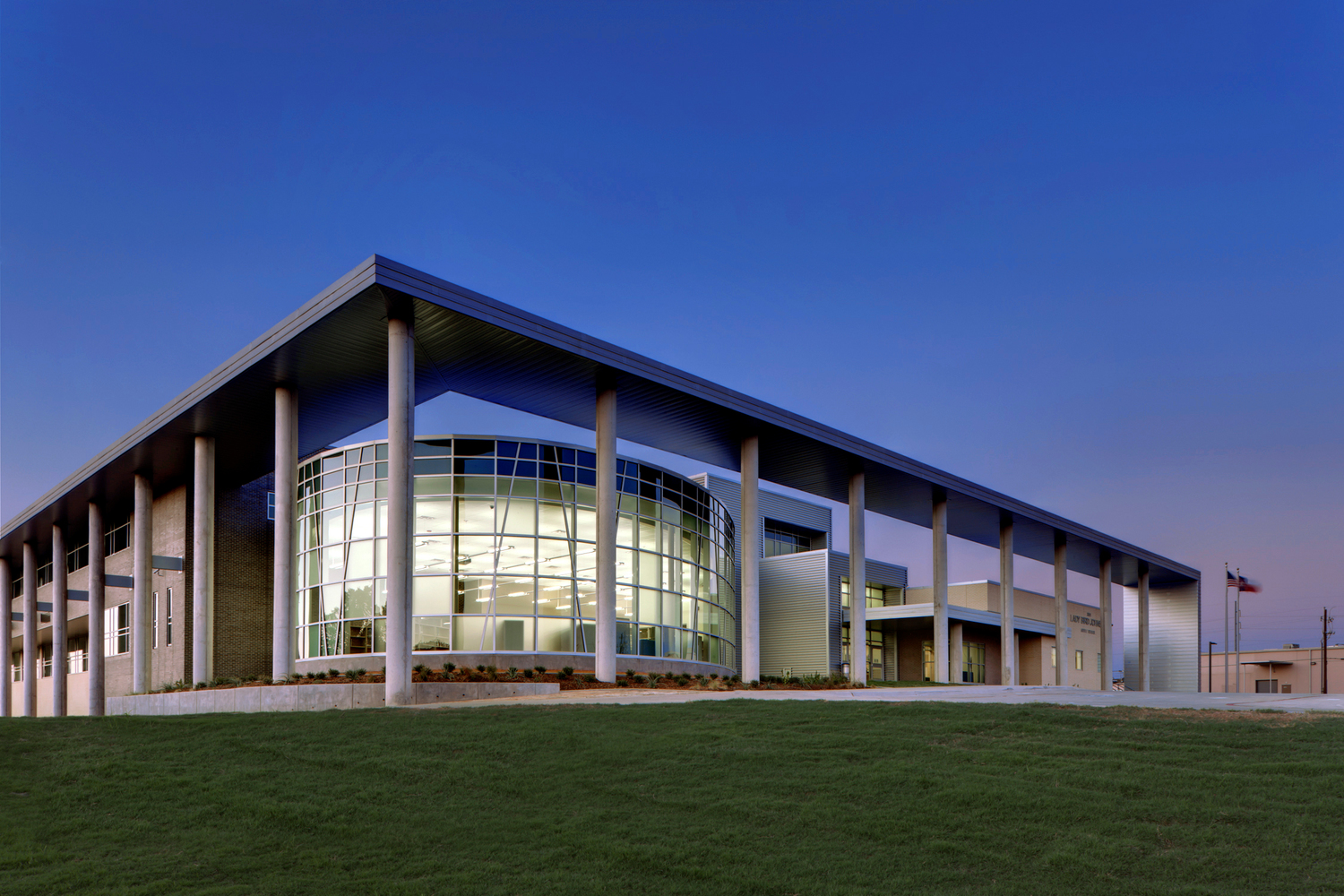
Lady Bird Johnson Middle School, the largest net zero middle school in the US and the first in Texas, was designed to reduce energy consumption by more than 50 percent compared to typical schools with advanced control systems monitoring. The school uses wireless laptop technologies for all computing needs to further reduce power and cooling loads. An underground rainwater collection tank helps water the garden beds to the north of the school while native plants including a wildflower garden in the front of the school feature Texas wildflowers from seeds that came from the Lady Bird Johnson Foundation in Austin.
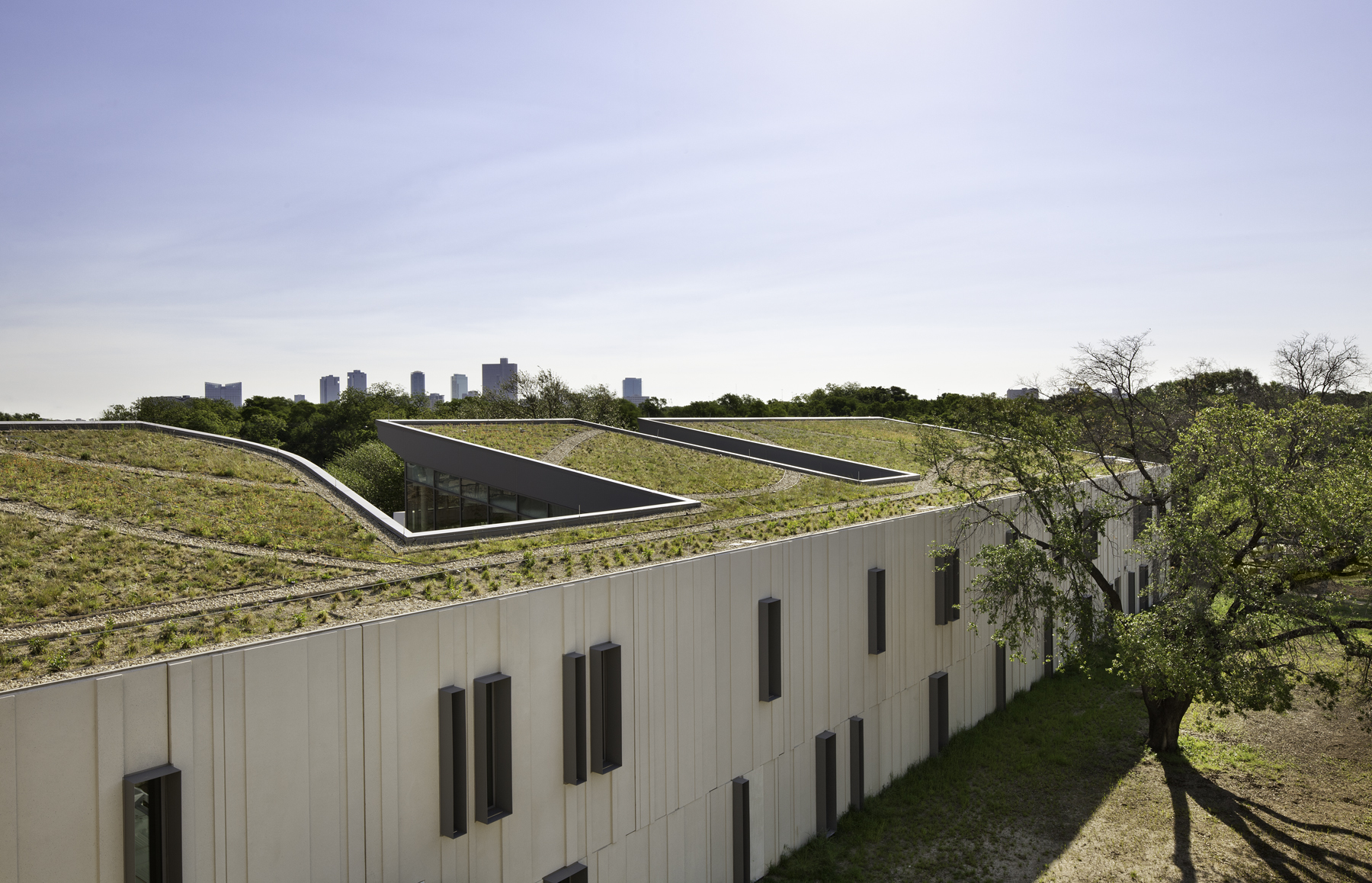
AI and the Future of Water Conservation
Integrating artificial intelligence (AI) in building water systems has the potential to greatly reduce water consumption and efficiency of usage. AI, of course, is as useful as the quality and quantity of its data. While it requires an upfront investment in sensors and meters at various junctions of water flow through the building, once collected such data can be of immense value, especially when used with AI algorithms. Once the flow patterns are registered, these algorithms can easily detect a discrepancy from trends it has already recorded and can immediately send signals to a building management system. Such real-time detection and prediction of leaks and failures can potentially save enormous amounts of water.
As climate change impacts our weather patterns and causes unpredictable scenarios, along with the decline of this valuable resource around the world, perhaps we can better manage the flow of water through our built environments by applying a system-thinking approach to sustainable architecture and design combined with applicable technologies and raising our awareness for mankind.
Sources
- Environmental Protection Agency. (2022, August 29). “Data and Information Used by WaterSense.” EPA.
- Antunes, L. N., Thives, L. P., & Ghisi, E. (2016). Potential for potable water savings in buildings by using stormwater harvested from porous pavements. Water, 8(4). 110.
- Environmental Protection Agency. (2022, August 29). “Data and Information Used by WaterSense.” EPA.
- National Intelligence Council. (2021, November 18,). “Water Insecurity Threatening Global Economic Growth, Political Stability.” Water Insecurity Threatening Global Economic Growth, Political Stability. Retrieved February 2, 2023.
- Environmental Protection Agency. (2022, August 29). “Data and Information Used by WaterSense.” EPA.
